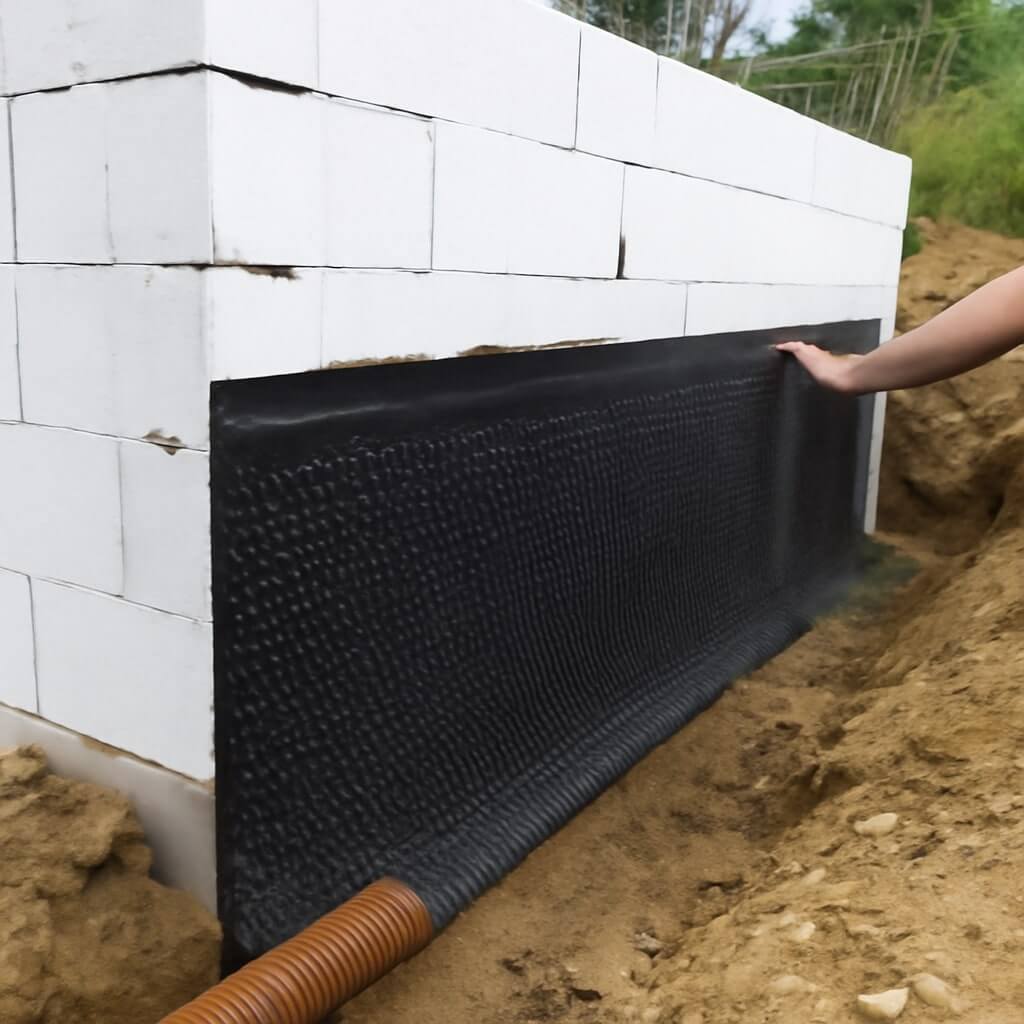When you’re considering ICF basement waterproofing, it’s vital to be aware of common pitfalls that can compromise your efforts. Ignoring proper site grading, for instance, can lead to significant water issues. Additionally, many overlook the importance of effective drainage systems, which are fundamental for long-term protection. Each mistake can have serious consequences, but knowing what to avoid can save you time and money. Let’s explore these key factors further.
Key Takeaways
- Ensure proper site grading to direct water away from the foundation, aiming for a slope of at least 1-2%.
- Implement effective drainage systems to prevent water accumulation and avoid long-term structural issues.
- Select and install appropriate waterproofing membranes, ensuring they create a seamless barrier against water intrusion.
- Seal all joints and penetrations thoroughly to prevent leaks and potential mold growth within the basement.
- Establish a regular maintenance schedule to inspect and maintain waterproofing systems and drainage performance.
Ignoring Proper Site Grading
When you overlook proper site grading, you set the stage for potential water intrusion issues in your ICF basement.
Ensuring the correct site slope is essential for directing water away from your foundation. Without appropriate grading, drainage patterns can become ineffective, causing water to pool around your basement walls.
This accumulation increases hydrostatic pressure, compromising your waterproofing efforts. You need to evaluate and adjust the landscape to achieve a slope of at least 1-2% away from the foundation.
Skipping Drainage Systems
Although it might seem tempting to cut costs by skipping drainage systems, this can lead to significant long-term issues in your ICF basement.
Proper drainage is essential for effective foundation water management, preventing water accumulation that can compromise structural integrity.
Neglecting this aspect may result in:
- Mold growth on walls
- Cracked foundation surfaces
- Rusted HVAC components
- Increased humidity levels
- Costly repair bills
Using Inadequate Waterproofing Membranes
When selecting waterproofing membranes for your ICF basement, it’s vital to understand the various types available and their specific applications.
You need to guarantee proper installation techniques are followed to maximize effectiveness and prevent future issues.
Additionally, consider the long-term durability of the membranes to protect your investment against moisture intrusion.
Types of Waterproofing Membranes
Choosing the right waterproofing membrane is essential for effective ICF basement waterproofing, as using inadequate membranes can lead to significant water damage.
You have two primary options: liquid membranes and sheet membranes. Each type offers distinct advantages, but their effectiveness hinges on proper selection.
- Liquid membranes create a seamless barrier
- Sheet membranes provide robust physical protection
- Liquid membranes can adapt to complex shapes
- Sheet membranes are often easier to install
- Both types require specific environmental conditions
Proper Installation Techniques
Proper installation techniques are essential for achieving effective waterproofing in ICF basements, especially when using inadequate membranes. To guarantee success, you must select high-quality installation materials and adhere to best practices.
Begin by properly preparing the surface, making sure it’s clean and free of debris. Install the membrane according to the manufacturer’s guidelines, paying close attention to seams and overlaps. Use compatible adhesives and sealants to enhance water resistance.
Avoid shortcuts, as improper installation can lead to leaks and costly repairs. Regularly inspect your work during the process to identify and rectify any potential issues before they escalate.
Long-Term Durability Considerations
While selecting the right waterproofing membrane is critical, using inadequate options can compromise the long-term durability of your ICF basement.
Poor material selection leads to failures, ultimately costing you more in repairs.
Consider these aspects for long-lasting solutions:
- Thickness: Thinner membranes may not withstand hydrostatic pressure.
- Material Composition: Incompatible materials can deteriorate over time.
- Installation Method: Improper application can lead to leaks.
- Resistance to Mold: Inadequate membranes may foster mold growth.
- Weather Resistance: Some membranes aren’t designed for extreme conditions.
Choose wisely to guarantee your basement remains dry and durable for years to come.
Neglecting to Seal Joints and Penetrations
When sealing joints and penetrations in ICF basement waterproofing, overlooking this crucial step can lead to significant issues down the line. Effective joint sealing and penetration protection are essential to prevent water intrusion. Failing to address these areas can compromise your entire waterproofing system.
| Issue | Consequence |
|---|---|
| Unsealed Joints | Water leaks and structural damage |
| Inadequate Penetration Protection | Mold growth and health hazards |
| Poor Application Techniques | Increased maintenance costs |
Ensure thorough sealing practices to maintain a dry, safe basement environment, ultimately safeguarding your investment.
Disregarding Ventilation Needs
Ignoring ventilation needs in ICF basement waterproofing can lead to serious moisture problems.
Proper air circulation is essential to maintain a dry environment, so conducting a ventilation assessment is vital. Without it, you risk:
Proper air circulation is crucial for a dry basement; neglecting ventilation assessments can lead to significant moisture issues.
- Stale air accumulating, fostering mold growth
- Persistent dampness causing structural damage
- Unpleasant odors permeating your living space
- Increased humidity levels affecting indoor air quality
- Higher energy costs from inefficient HVAC systems
Ensure your basement has adequate ventilation to mitigate these issues.
Failing to Address Soil Issues
Neglecting to address soil issues can greatly undermine the effectiveness of your ICF basement waterproofing efforts.
Without proper soil stabilization techniques, you risk soil movement, which can lead to cracks and leaks. Conducting thorough drainage analysis methods is essential to identify potential water flow paths around your foundation.
This analysis allows you to implement necessary drainage solutions, such as French drains or sump pumps, ensuring that water is redirected away from your basement.
By proactively addressing soil conditions, you enhance your waterproofing efforts and protect your investment from costly damage and repairs in the future.
Don’t overlook this critical step!
Overlooking Regular Maintenance
Regular maintenance is often an overlooked aspect of ICF basement waterproofing that can greatly impact its long-term effectiveness.
Regular maintenance is crucial for ensuring the long-term effectiveness of ICF basement waterproofing systems.
To guarantee your system functions at its best, establish a maintenance schedule that includes regular inspections.
- Check for cracks in walls or foundation
- Inspect drainage systems for clogs
- Assess sump pump functionality
- Examine gutters and downspouts
- Monitor soil grading around the foundation
Rushing the Installation Process
When you rush the installation process of ICF basement waterproofing, you compromise the integrity of the entire system. A hasty approach can lead to improper sealing, inadequate drainage, and ultimately, water intrusion.
To avoid this, develop a detailed installation timeline that allows ample time for each step. Ascertain thorough project planning to address potential challenges, allowing for adjustments without sacrificing quality.
By adhering to a well-structured timeline, you guarantee that every component is installed correctly, enhancing the effectiveness of the waterproofing system.
Conclusion
In conclusion, avoiding common mistakes in ICF basement waterproofing is vital for long-term success. Guarantee proper site grading to prevent water pooling, install effective drainage systems, and select high-quality waterproofing membranes. Don’t forget to seal joints and penetrations, address ventilation needs, and tackle soil issues. Regular maintenance is essential, as is taking your time during installation. By paying attention to these details, you can safeguard your basement against water damage and structural problems for years to come.

